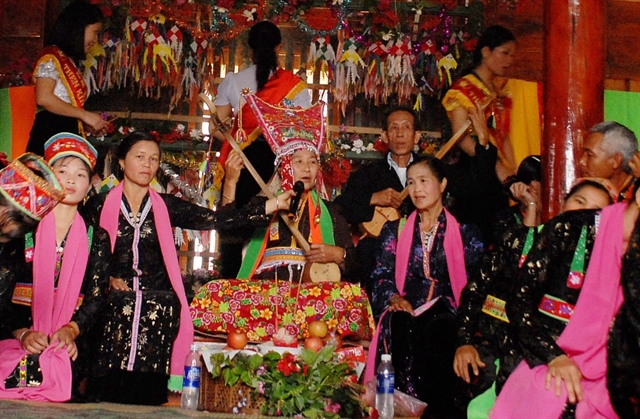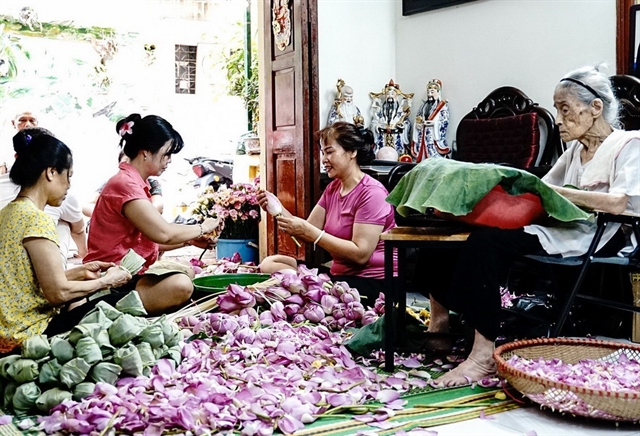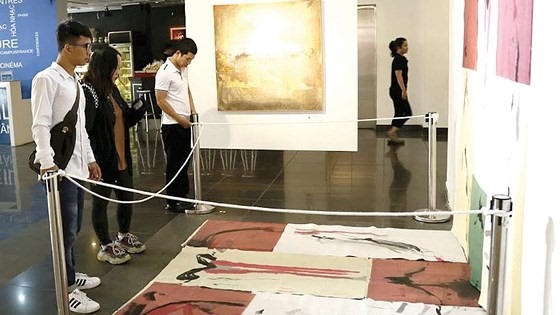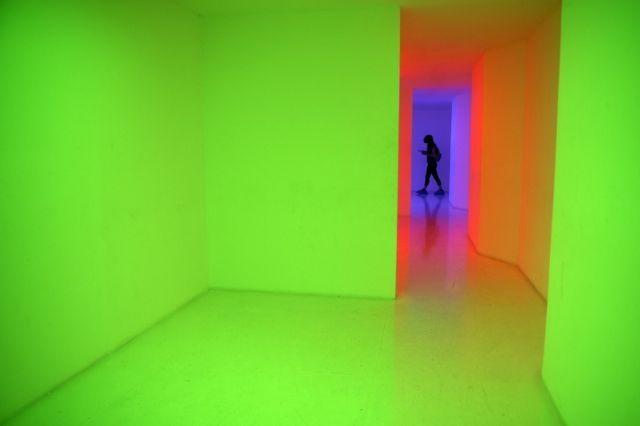

|
| A pattern on a bronze cannon found at a construction site in Đà Nẵng. The cannon has been identified as coming from the Netherlands and was made 350 years ago. Photo courtesy of Đà Nẵng Museum |
ĐÀ NẴNG — A bronze cannon, which was found at a construction site on a beach in Đà Nẵng on May 24, has been identified as having been created in the Netherlands around 350 years ago. The bronze cannon belonged to the Nguyễn Dynasty and was used in fighting the French-Spanish coalition forces (1858-1860).
A research team from Đà Nẵng city’s museum and historian Nguyễn Quang Trung Tiến revealed the information on the bronze cannon that was found for the first time in Đà Nẵng after the fight against French-Spanish forces 160 years ago.
Tiến, a historical researcher from Huế University, said the cannon has similar patterns and design as four other bronze cannons that are in the antiquities museum of Huế.
He said the newly found cannon is 174cm long and weighs 200kg with cylindrical barrel and 146mm-diameter muzzle.
He said the cannon used 16kg of gunpowder for each shot.
“We thought that patterns of the flying phoenix and stylized rose-shaped design and tulip on the body of the cannon were believed to be from the Netherlands in the 17th century,” Tiến said in a report.
“Its design and carvings can be found on the four bronze cannons that are on display at Huế city’s antiquities museum (that were cast in 1640, 1661 and 1677-78). We also reviewed documents for our final report on the Đà Nẵng bronze cannon,” he said.
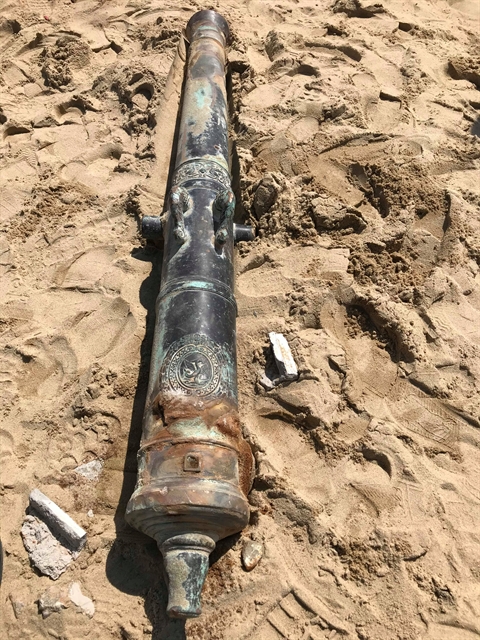
|
The historical researcher said the latest cannon in Đà Nẵng is familiar to a cannon made by Peter Verbruggen in 1782 (this cannon is on display at the National Archives of Canada).
According to the report, the Nguyễn Dynasty did not have trading contracts or transactions of weaponry with the Netherlands in the 19th century.
However, the report said the bronze cannon could belong to the Trịnh Lord (governing the northern region) in the Trịnh-Nguyễn conflict after the Second Lê Dynasty 1627-1775.
The Nguyễn Dynasty, which eventually took control of the country (1802-1945), would seize numerous bronze cannons from the Trịnh Lord.
Tiến also revealed that some bronze cannons had been taken from the stranded ship Kemphaan in the waters off Hoàng Sa (Paracel) Islands in 1633, and from the shipwreck of the sunken Der Gooes vessel in waters off the southern region of Việt Nam in 1661.
Bronze cannons were given by the Netherlands as gifts to the Trịnh Lord in 1649-1679, and the Nguyễn Dynasty then took these cannons after the Trịnh-Nguyễn conflict ended in the late 18th century and early 19th century, the report showed.
Tiến, who has conducted research on the Huế Monuments, said the newly-found bronze cannon in Đà Nẵng was from the 17th century (1633-1678).
He said generations of kings Gia Long, Minh Mạng, Thiệu Trị, and Tự Đức (1813-1850) had set up many bronze and iron cannons at the Điện Hải Citadel near the Hàn Estuary in protection of Đà Nẵng in the 19th century.
According to historical researchers in Đà Nẵng and Huế, the newest bronze cannon on the beach of Đà Nẵng was included in the defensive weapon system of the Điện Hải Citadel and An Hải garrison in the Hàn River Estuary and Đà Nẵng Bay in 1858-60.
The Đà Nẵng Museum still preserves a collection of 11 iron cannons that were unearthed at the Điện Hải Citadel from 1979-2008.
The existence of the cannon and the citadel is attached to famous general Nguyễn Tri Phương (1800-1873) under the Nguyễn Dynasty when he commanded an army fighting against the French-Spanish coalition forces (1858-1860).
The Điện Hải Citadel and garrisons and military stations were constructed as important defensive positions.
The first cannon fire and attacks by French-Spanish coalition forces occurred on September 1, 1858, while the Vietnamese troops, under the command of General Phương, stopped the French advancing into Đà Nẵng.
The Điện Hải Citadel (now the Đà Nẵng Museum at 24 Trần Phú Street) is the only vestige left from the battle 160 years ago. It was recognised as a national special heritage in 2017.
A graveyard of French-Spanish soldiers who died during the 1858-60 battles is preserved near Tiên Sa Port, and a chapel still kept protection at the foot of Sơn Trà Mountain.
According to the Đà Nẵng Museum, more than 4,300 Vietnamese civilians and soldiers were killed during the 1858-60 battle with the French-Spanish forces. VNS

.jfif)
